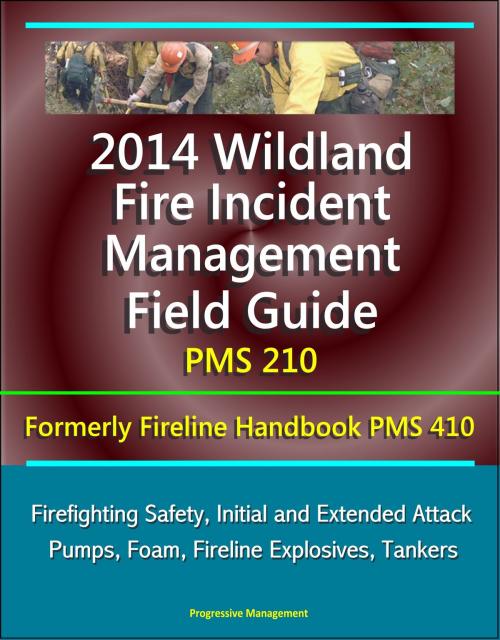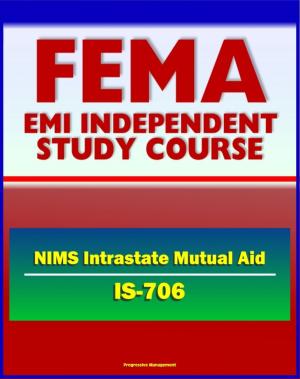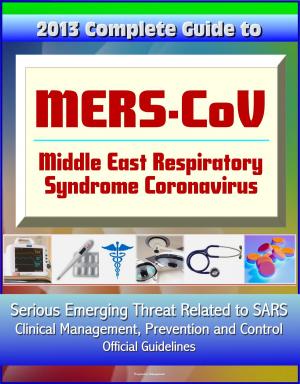2014 Wildland Fire Incident Management Field Guide PMS 210 (Formerly Fireline Handbook PMS 410) - Firefighting Safety, Initial and Extended Attack, Pumps, Foam, Fireline Explosives, Tankers
Nonfiction, Science & Nature, Technology, Fire Science, Science, Biological Sciences, Ecology| Author: | Progressive Management | ISBN: | 9781310416217 |
| Publisher: | Progressive Management | Publication: | August 23, 2014 |
| Imprint: | Smashwords Edition | Language: | English |
| Author: | Progressive Management |
| ISBN: | 9781310416217 |
| Publisher: | Progressive Management |
| Publication: | August 23, 2014 |
| Imprint: | Smashwords Edition |
| Language: | English |
The Wildland Fire Incident Management Field Guide states, references, or supplements wildland fire incident management and operational standards established by the National Wildfire Coordinating Group (NWCG). The Wildland Fire Incident Management Field Guide is a revision of what used to be called the Fireline Handbook, PMS 410-1. This guide has been renamed because, over time, the original purpose of the Fireline Handbook had been replaced by the Incident Response Pocket Guide, PMS 461. As a result, this new guide is aimed at a different audience, and it was felt a new name was in order.
CHAPTER 1 - FIREFIGHTING SAFETY * Risk Management * Tenets of a High Reliability Organization * Wildland Fire Safety Culture * Wildland Fire Safety Principles * Clothing and Personal Protective Equipment * Fatigue - Work and Rest * Nutrition and Hydration * Driving Limitations * Smoke Impairment of Roads: Assessment and Response * Carbon Monoxide Poisoning * Injury and Fatality Procedures * Serious Injury * Fatality * Burn Injury Procedures * Night Operations * Personnel Transportation * Firing Equipment * Chain Saws * Incident-Generated Hazmat * Media Access Guidelines * General Policy * Guidelines * Safety Responsibilities of Wildland Fire Supervisors * General Responsibilities * CHAPTER 2 - OPERATIONAL GUIDES * Initial Attack * Definition of Initial Attack * Characteristics of an Initial Attack Incident (Type 4 And Type 5 Incidents) * Example of Initial Attack Organization (Type 4 Incident) * Duties of an Initial Attack Incident Commander * Assessing Incident Progress * Updating Incident Status * Fire Suppression Strategies * Initial Attack Safety Checklist * Extended Attack * Definition of Extended Attack * Characteristics of an Extended Attack Incident * Example of an Extended Attack Organization * Change From an Initial Attack Incident to an Extended Attack Incident * Control or Transfer to Type 2 Incident * Extended Attack Safety Checklist * Large Fire Management Teams * Type 2 Organization * Type 1 Organization * Organization Chart for Type 1 and Type 2 Incidents * Area Command * Unified Command * Transfer of Command * Incident Commander Briefing * Incident Commander's Checklist * Agency Administrator(s)' Responsibility for the Transfer of Command and Release of Incident Management Teams * Transfer of Authority * Agency Administrator Briefing * Release of an Incident Management Team * Urban Interface * Wildland/Urban Interface "Watch Out" Situations * Identification of Reduced-Risk Structures and Communities * Structure Triage Guidelines * Structure Assessment Checklist (if Time Permits) * Structure Protection Guidelines * CHAPTER 3 - POSITION RESPONSIBILITIES * Command and General Staff * Organization Chart * Position Checklists * Operations * Organization Chart * Position Checklists * Air Operations * Position Checklists * Helispot Location and Construction * Principles of Retardant Application * Planning * Organization Chart * Position Checklists * Planning Process * Demobilization * Logistics * Organization Chart * Position Checklists * Logistics Guidelines * Factors to Consider When Locating and Laying Out an Incident Base or Camp * Finance/Administration * Organization Chart * Position Checklists * CHAPTER 4 - REFERENCE * Portable Pumps and Hydraulics * Formula for Determining Pump Pressure * Reminders for Using Portable Pumps and Hose Lays * Drafting Guidelines * Expected Output of Commonly Used Portable Pumps at Sea Level * General Rules for Fireline Hydraulics * Friction Loss by Hose Size and Type * Pump Pressures for 50-psi Nozzle Pressure * Pump Pressures for 50-psi Nozzle Pressure * Foam * Foam Use * Foam Mixture Rates * Foam for Direct Attack * Foam for Indirect Attack * Foam for Mop Up * Foam for Exposure Protection * Foam Safety * Use of Fireline Explosives * Advantages * Disadvantages * Hazmat Checklist for Incident Base Management * Use of Inmate Crews
The Wildland Fire Incident Management Field Guide states, references, or supplements wildland fire incident management and operational standards established by the National Wildfire Coordinating Group (NWCG). The Wildland Fire Incident Management Field Guide is a revision of what used to be called the Fireline Handbook, PMS 410-1. This guide has been renamed because, over time, the original purpose of the Fireline Handbook had been replaced by the Incident Response Pocket Guide, PMS 461. As a result, this new guide is aimed at a different audience, and it was felt a new name was in order.
CHAPTER 1 - FIREFIGHTING SAFETY * Risk Management * Tenets of a High Reliability Organization * Wildland Fire Safety Culture * Wildland Fire Safety Principles * Clothing and Personal Protective Equipment * Fatigue - Work and Rest * Nutrition and Hydration * Driving Limitations * Smoke Impairment of Roads: Assessment and Response * Carbon Monoxide Poisoning * Injury and Fatality Procedures * Serious Injury * Fatality * Burn Injury Procedures * Night Operations * Personnel Transportation * Firing Equipment * Chain Saws * Incident-Generated Hazmat * Media Access Guidelines * General Policy * Guidelines * Safety Responsibilities of Wildland Fire Supervisors * General Responsibilities * CHAPTER 2 - OPERATIONAL GUIDES * Initial Attack * Definition of Initial Attack * Characteristics of an Initial Attack Incident (Type 4 And Type 5 Incidents) * Example of Initial Attack Organization (Type 4 Incident) * Duties of an Initial Attack Incident Commander * Assessing Incident Progress * Updating Incident Status * Fire Suppression Strategies * Initial Attack Safety Checklist * Extended Attack * Definition of Extended Attack * Characteristics of an Extended Attack Incident * Example of an Extended Attack Organization * Change From an Initial Attack Incident to an Extended Attack Incident * Control or Transfer to Type 2 Incident * Extended Attack Safety Checklist * Large Fire Management Teams * Type 2 Organization * Type 1 Organization * Organization Chart for Type 1 and Type 2 Incidents * Area Command * Unified Command * Transfer of Command * Incident Commander Briefing * Incident Commander's Checklist * Agency Administrator(s)' Responsibility for the Transfer of Command and Release of Incident Management Teams * Transfer of Authority * Agency Administrator Briefing * Release of an Incident Management Team * Urban Interface * Wildland/Urban Interface "Watch Out" Situations * Identification of Reduced-Risk Structures and Communities * Structure Triage Guidelines * Structure Assessment Checklist (if Time Permits) * Structure Protection Guidelines * CHAPTER 3 - POSITION RESPONSIBILITIES * Command and General Staff * Organization Chart * Position Checklists * Operations * Organization Chart * Position Checklists * Air Operations * Position Checklists * Helispot Location and Construction * Principles of Retardant Application * Planning * Organization Chart * Position Checklists * Planning Process * Demobilization * Logistics * Organization Chart * Position Checklists * Logistics Guidelines * Factors to Consider When Locating and Laying Out an Incident Base or Camp * Finance/Administration * Organization Chart * Position Checklists * CHAPTER 4 - REFERENCE * Portable Pumps and Hydraulics * Formula for Determining Pump Pressure * Reminders for Using Portable Pumps and Hose Lays * Drafting Guidelines * Expected Output of Commonly Used Portable Pumps at Sea Level * General Rules for Fireline Hydraulics * Friction Loss by Hose Size and Type * Pump Pressures for 50-psi Nozzle Pressure * Pump Pressures for 50-psi Nozzle Pressure * Foam * Foam Use * Foam Mixture Rates * Foam for Direct Attack * Foam for Indirect Attack * Foam for Mop Up * Foam for Exposure Protection * Foam Safety * Use of Fireline Explosives * Advantages * Disadvantages * Hazmat Checklist for Incident Base Management * Use of Inmate Crews















